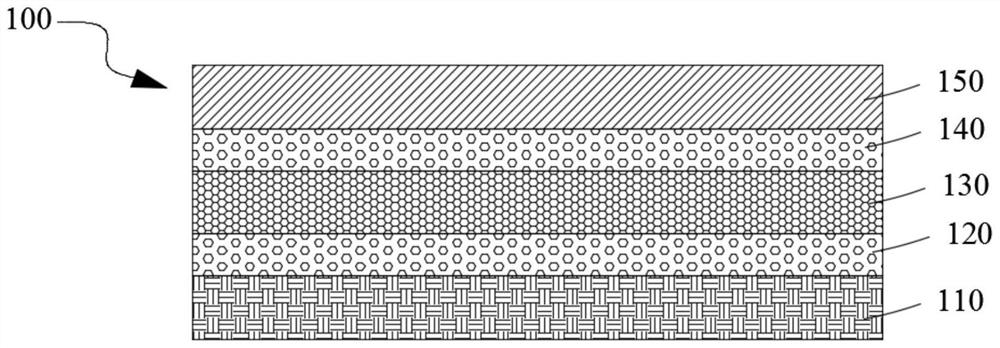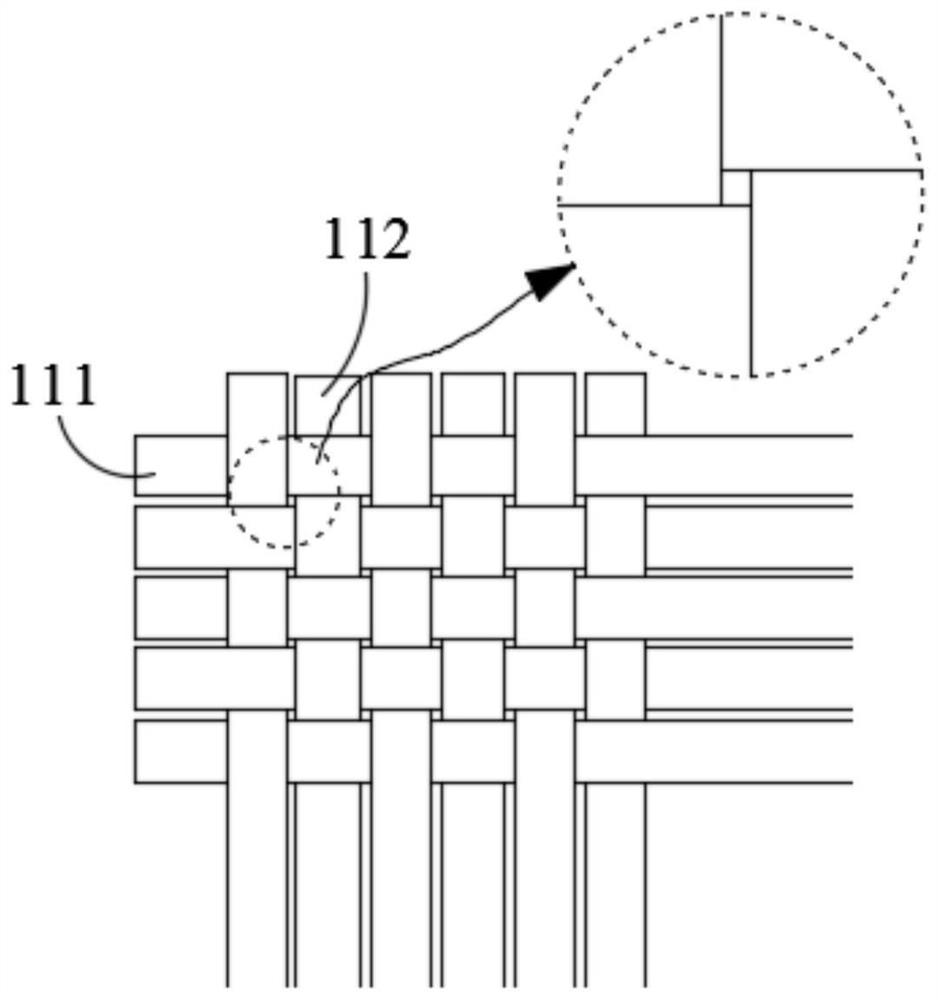Antibacterial finishing agent, finishing method and fabric product
An antibacterial finishing agent and fabric technology, which is applied in fiber treatment, biochemical fiber treatment, textiles and papermaking, etc., can solve problems such as difficult to achieve anti-virus function, unsatisfactory finishing effect, and low comfort, so as to protect human health and reduce costs. Low, high flexibility effect
- Summary
- Abstract
- Description
- Claims
- Application Information
AI Technical Summary
Problems solved by technology
Method used
Image
Examples
preparation example Construction
[0072] Such as Figure 9 to Figure 10 As shown, in another specific embodiment disclosed by the present invention, the antibacterial fabric 210 can be, for example, polyquaternium / aloe antibacterial fiber, and the polyquaternium / aloe antibacterial fiber is composed of polyquaternium and aloe The extract spinning solution is obtained by spinning, which has the effects of acne removal, anti-inflammatory and antibacterial. The present invention discloses a preparation method for preparing the polyquaternium / aloe antibacterial fiber as described above, including but not limited to the following steps:
[0073] —S301, providing a spinning solution, the spinning slurry comprises the following components by weight:
[0074] Carboxymethyl chitosan 3-10% by weight, polyquaternium 0.01-0.1% by weight, aloe extract 15-30% by weight, polyvinyl alcohol 10-50% by weight, sulfonate 1.5-5% by weight, alcohol 3-10% by weight and the balance of deionized water;
[0075] —S302, stirring and mi...
Embodiment
[0138] experiment material
[0139] According to the test materials in Table 1 and the above-mentioned finishing method, Examples 1-4 were manufactured to obtain corresponding fabric products.
[0140] testing method.
[0141] The obtained fabric products obtained in Manufacturing Examples 1-4 were tested for anti-virus, antibacterial test and color fastness, and the test results are shown in Table 1.
[0142]Anti-virus and anti-bacterial test: According to GB / T 20944-2007, test the average antibacterial rate of fabric products against Staphylococcus aureus (AATCC6538), Escherichia coli (8099), and Candida albicans (AATCC10231). Through in vitro virus culture experiments, the inactivation rate of influenza virus (RNA virus) 1.0×103 HC50 units / ml virus solution for 1 hour at 4°C. Washing method Wash 50 times according to the washing method in AATCC135.
[0143] Color fastness test: According to GB 18401-2010 standard fabric products color fastness to water.
[0144] Tab...
PUM
| Property | Measurement | Unit |
|---|---|---|
| Particle size | aaaaa | aaaaa |
| Porosity | aaaaa | aaaaa |
| Molecular weight | aaaaa | aaaaa |
Abstract
Description
Claims
Application Information
 Login to View More
Login to View More - R&D
- Intellectual Property
- Life Sciences
- Materials
- Tech Scout
- Unparalleled Data Quality
- Higher Quality Content
- 60% Fewer Hallucinations
Browse by: Latest US Patents, China's latest patents, Technical Efficacy Thesaurus, Application Domain, Technology Topic, Popular Technical Reports.
© 2025 PatSnap. All rights reserved.Legal|Privacy policy|Modern Slavery Act Transparency Statement|Sitemap|About US| Contact US: help@patsnap.com



